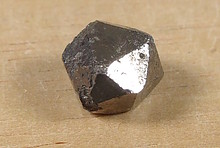Home PageAbout MindatThe Mindat ManualHistory of MindatCopyright StatusWho We AreContact UsAdvertise on Mindat
Donate to MindatCorporate SponsorshipSponsor a PageSponsored PagesMindat AdvertisersAdvertise on Mindat
Learning CenterWhat is a mineral?The most common minerals on earthInformation for EducatorsMindat ArticlesThe ElementsThe Rock H. Currier Digital LibraryGeologic Time
Minerals by PropertiesMinerals by ChemistryAdvanced Locality SearchRandom MineralRandom LocalitySearch by minIDLocalities Near MeSearch ArticlesSearch GlossaryMore Search Options
The Mindat ManualAdd a New PhotoRate PhotosLocality Edit ReportCoordinate Completion ReportAdd Glossary Item
Mining CompaniesStatisticsUsersMineral MuseumsClubs & OrganizationsMineral Shows & EventsThe Mindat DirectoryDevice SettingsThe Mineral Quiz
Photo SearchPhoto GalleriesSearch by ColorNew Photos TodayNew Photos YesterdayMembers' Photo GalleriesPast Photo of the Day GalleryPhotography
╳Discussions
💬 Home🔎 Search📅 LatestGroups
EducationOpen discussion area.Fakes & FraudsOpen discussion area.Field CollectingOpen discussion area.FossilsOpen discussion area.Gems and GemologyOpen discussion area.GeneralOpen discussion area.How to ContributeOpen discussion area.Identity HelpOpen discussion area.Improving Mindat.orgOpen discussion area.LocalitiesOpen discussion area.Lost and Stolen SpecimensOpen discussion area.MarketplaceOpen discussion area.MeteoritesOpen discussion area.Mindat ProductsOpen discussion area.Mineral ExchangesOpen discussion area.Mineral PhotographyOpen discussion area.Mineral ShowsOpen discussion area.Mineralogical ClassificationOpen discussion area.Mineralogy CourseOpen discussion area.MineralsOpen discussion area.Minerals and MuseumsOpen discussion area.PhotosOpen discussion area.Techniques for CollectorsOpen discussion area.The Rock H. Currier Digital LibraryOpen discussion area.UV MineralsOpen discussion area.Recent Images in Discussions
Identity Helpmineral identification

5th Apr 2020 22:29 UTCGreg Rawlins
this website introduced me, a student of geography, to the field of geology about a year ago. it fascinated me so much that I stopped my geography degree and applied to study geology this summer.
I've been out collecting a few times and ID'ed most minerals. These samples, however, leave me puzzled.
I've been out collecting a few times and ID'ed most minerals. These samples, however, leave me puzzled.
Since I am not sure how to post more than one photo I will add the other mineral as comments.
Specimen A:
Found in a Nepalese road cut. The mountains were mainly mica shists and phyllite, the only igneous outcrop caught my eye as it showed signs of a dyke where the following examples were found. The sample is too small to scratch it with force, I tried as hard as I could - a knife will not scratch it.
5th Apr 2020 22:31 UTCUwe Kolitsch Manager

5th Apr 2020 22:39 UTCGreg Rawlins
that's what the people on r/geology said too. Since you both suggested that it seems reasonable to assume it is indeed clinozoisite. Thank you!

5th Apr 2020 22:32 UTCGreg Rawlins
this was found in an Icelandic road cut/parking lot. I assume it is calcite because of the cubic cleavage in the bottom left corner? I am not sure, however, if calcite forms these needles.

5th Apr 2020 22:37 UTCGreg Rawlins
found in a mine dump northeast of Stockholm, Sweden listed Fe-sulphides as the "main commodities". It is super tiny and I just thought it looked cool. I assume it is too small for any ID?

11th Jun 2020 20:16 UTCKnut Edvard Larsen 🌟 Manager
11th Jun 2020 20:23 UTCKyle Beucke 🌟
If you think it might be calcite, drop some vinegar on it and see if it fizzes!
Kyle
11th Jun 2020 23:09 UTCUwe Kolitsch Manager
12th Jun 2020 13:30 UTCHarold Moritz 🌟 Expert
Thanks for decent photos, but please provide fields of view so we know what "super tiny" actually is. Never too small for an ID! Also descriptors like road cut or mine dump alone dont really help us, we need geological context - what kind of rock, what kind of mine, what rock type hosts the ore, etc. Minerals are products of their environment of formation, knowing that helps reduce the possibilities.
Specimen A does look like epidote/clinozoisite, but also could be scapolite or vesuvianite or even axinite. Does it fluoresce? Scapolite is commonly pinkish under short-wave.
Specimen B probably calcite/aragonite, as suggested, try some acid on it. May also fluoresce orange-red or yellow-white.
Specimen C could be zircon, these commonly fluoresce yellow. Maybe monazite.




Mindat.org is an outreach project of the Hudson Institute of Mineralogy, a 501(c)(3) not-for-profit organization.
Copyright © mindat.org and the Hudson Institute of Mineralogy 1993-2024, except where stated. Most political location boundaries are © OpenStreetMap contributors. Mindat.org relies on the contributions of thousands of members and supporters. Founded in 2000 by Jolyon Ralph.
Privacy Policy - Terms & Conditions - Contact Us / DMCA issues - Report a bug/vulnerability Current server date and time: April 27, 2024 01:29:55
Copyright © mindat.org and the Hudson Institute of Mineralogy 1993-2024, except where stated. Most political location boundaries are © OpenStreetMap contributors. Mindat.org relies on the contributions of thousands of members and supporters. Founded in 2000 by Jolyon Ralph.
Privacy Policy - Terms & Conditions - Contact Us / DMCA issues - Report a bug/vulnerability Current server date and time: April 27, 2024 01:29:55














